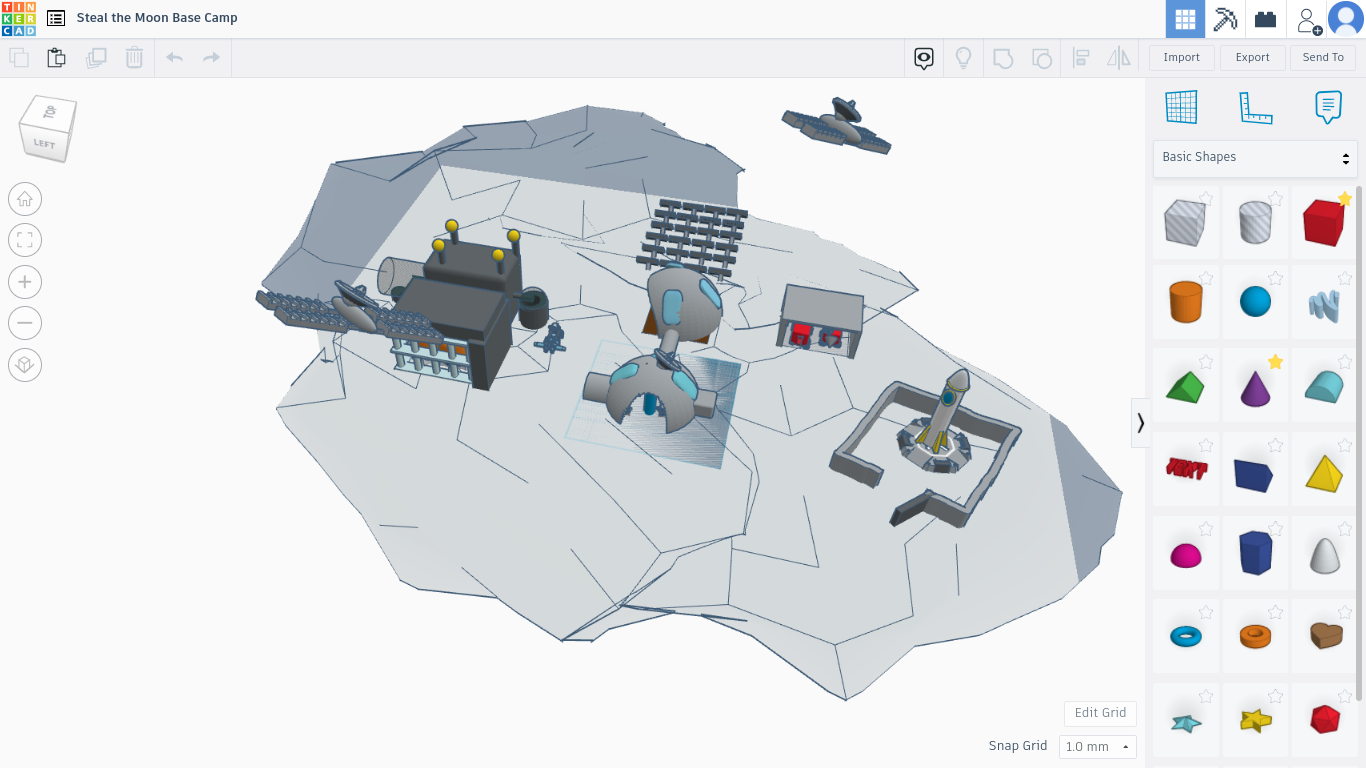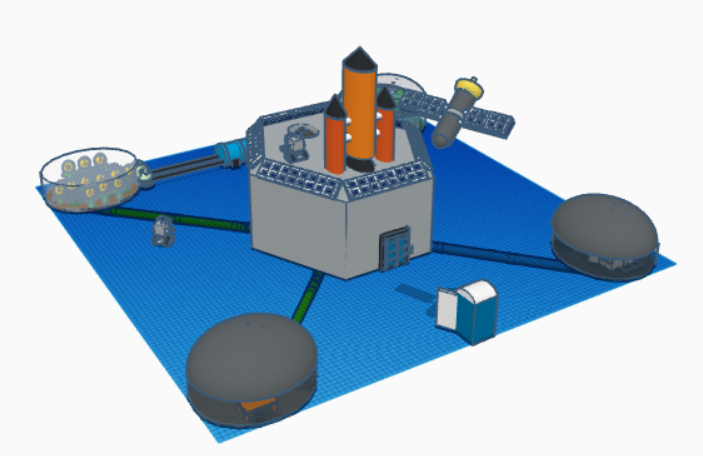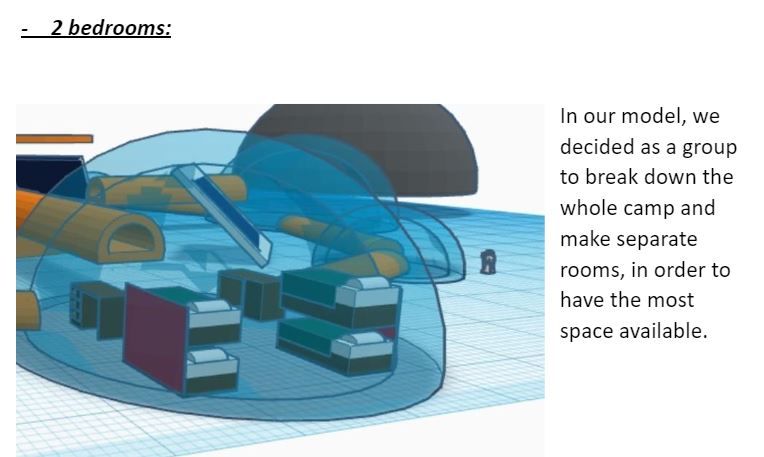Moon Camp Explorers Gallery 2021-2022
In Moon Camp Explorers each team’s mission is to 3D design a complete Moon Camp using Tinkercad. They also have to explain how they will use local resources, protect astronauts from the dangerous of space and describe the living and working facilities.
Team: Learnex Explorers
Learnex Brasov Romania 11, 12, 10, 9 5 / 1
External link for 3d
|
Project description
The Learnex Explorers Mooncamp project is guided by resource efficiency, innovation, sustainability and safety. The project aims to study the life adaption into the Moon and the usage of the local resources. Considering the project topics, it is considered to start with 3 astronauts with the following background: 1 biologist, 1 doctor and 1 engineer. The Mooncamp has a modular system, which can be replicated anywhere on the Moon. A module is created from a support, which assures the camp building into irregular surface and from a capsule where the future inhabitants will live. The modules are connected with tunnels with sealing doors for protection in case of damage of one or more modules. The communication with Earth and the rovers is made from the Control Room with a rotating antenna through laser. The research topics for life adaption into the Moon considers:
The research topics for local resource usage considers:
Other important projects:
|
||||
|
Where do you want to build your Moon Camp?
Close to the lunar poles Why did you choose this location?
The location is selected considering the ease of the resource obtaining, the importance for the life sustaining, the possibility of expansion of the mooncamp and the project sustainability. The location is selected because:
How do you plan to build your Mooncamp? Which materials will you use?
The building plan is:
|
||||
|
Water
|
Food
|
Electricity
|
Air
|
Protection
|
|
Water can be obtained from several sources: |
Food is obtained from 2 sources: |
The main power resource is considered to be from the sun. The energy is produced considering photovoltaic panels. To have a continuous source of energy, the panels are mounted on pivots to rotate them like a sun-flower after the sun. In the days with eclipse or energy production system damage, the mooncamp will use the energy which is stored on the batteries. These are situated near the panels. |
Air is obtained from several sources: |
Protection is offered by: |
|
Describe a day on the Moon for one of your Moon Camp astronauts
A day on the Moon is adapted considering the Earth life cycle: at least 8 hours for sleep, 8 hours for work and 8 hours personal time and systems checkings (also this time is supervised for research topics, with their approval). For example: 7:00 – Get up 7:00-7:30-Body Work-out 7:30-8:00 – Self hygiene 8:00-9:00 – Breakfast preparation and eating 9:00-9:30 – Mooncamp systems checks, sending reports of the systems on Earth 9:30- 12:00 – Work (each astronaut in his domain) 12:00-13:00 – Launch preparation and eating 13:00-18:30 – Work 18:30-19:00 – Mooncamp systems checks, sending reports of the systems on Earth 19:00-20:00 – Dinner preparation and eating 20:00-20:30 – Work-Out 20:30-21:00 – Self-Hygiene 21:00-23:00 – Socializing time between the team, at home on Earth, playing games, watching movies, reading, therapy etc. 23:00 – Sleeping time. This is a regular day on the Moon, but for a normality, 2 from 3 astronauts during the weekends have a day off for relaxation and to maintain a good mental condition. The other one is remaining on the Control Room for system checkings and measurements collection. If some emergency appears (in case of illness or some camp defectives), the entire team will try to solve the problems with help from Earth if it is necessary (as information). The emergencies inside the camp are announced on special watches and the astronauts must gather into the living room – the room with most connections from the camp. These watches are helping also for regular communication inside the camp. |
||||



















